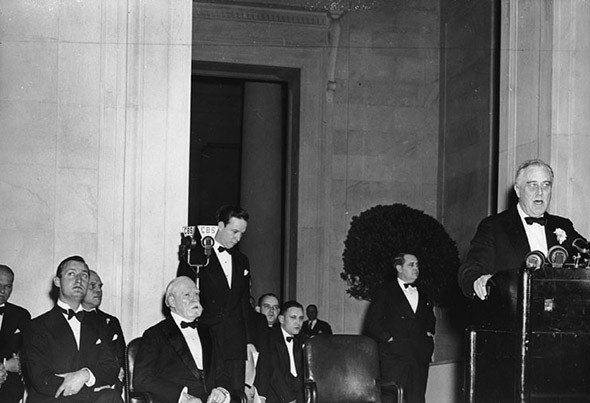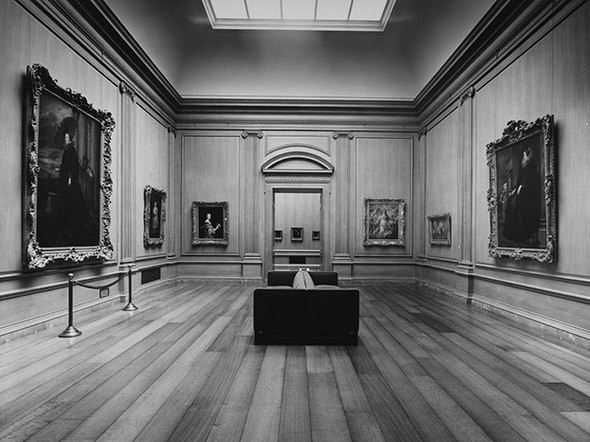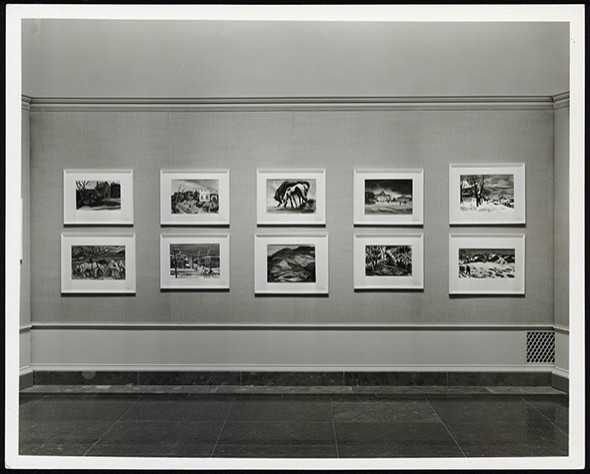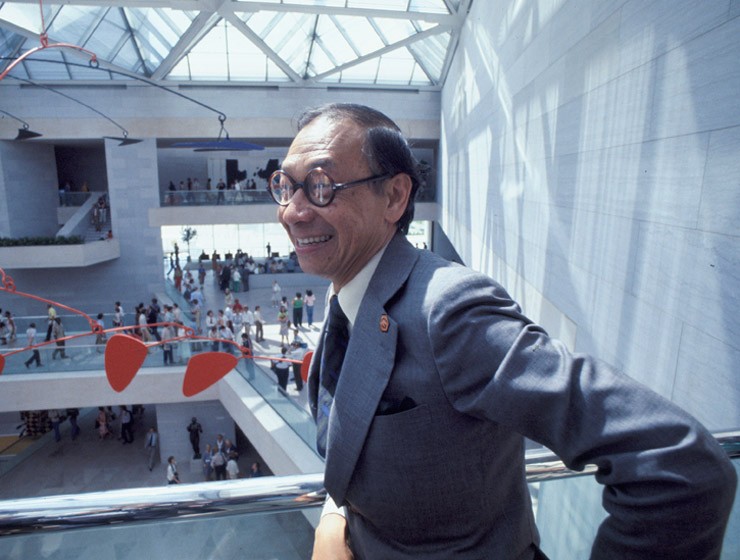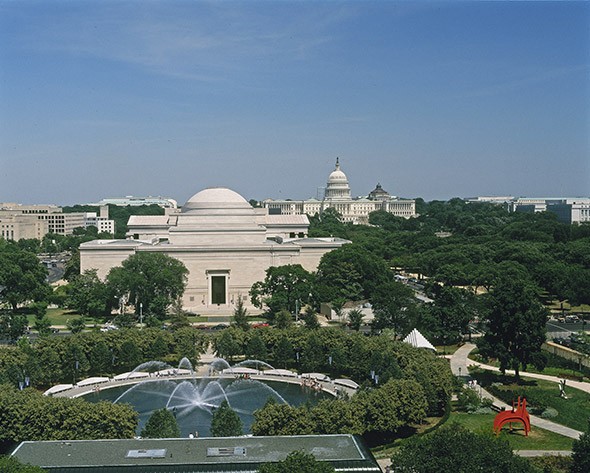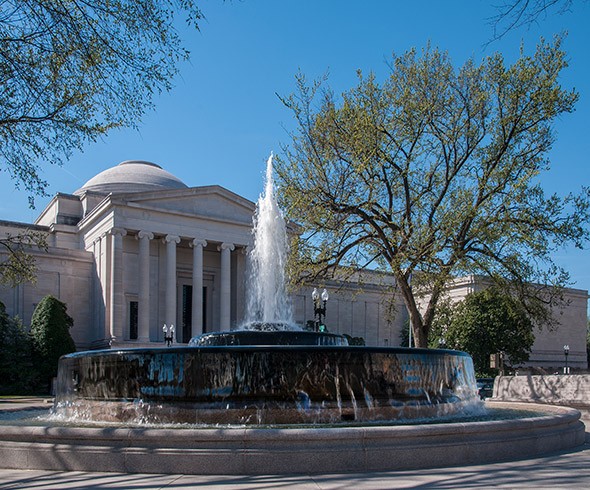Expanding the Mission: Construction of the East Building
Andrew Mellon anticipated that the National Gallery would grow beyond the capacity of its original building, and, at his request, Congress set aside an adjacent plot of land for future use when it first established the National Gallery. Plans for expansion were forming by the museum’s 25th anniversary in 1966, because most of its original galleries were filled and there was a desire to create a library and an advanced research center.
In 1967 Andrew Mellon’s children, Paul Mellon and Ailsa Mellon Bruce, offered funds for a second building, and architect I. M. Pei (1917–2019) was selected to design it. The modernist structure he conceived was inspired and informed by its trapezoidal site, located between Pennsylvania Avenue and the National Mall and between Third and Fourth Streets NW. To accommodate the unusual shape of the plot, Pei designed the East Building as two triangles—one to hold a library, offices, and community of scholars, and the other as public gallery space for the permanent collection and exhibitions. Pei linked his design to the neoclassical design of John Russell Pope by calling for the exterior to be clad in the same Tennessee pink marble used for the West Building.
Construction of the East Building began in 1971, and as workmen labored to realize Pei’s ambitious design, a newly founded Collectors Committee commissioned artists such as Henry Moore and Alexander Calder to create works for the East Building. This committee has made annual gifts of modern art to the National Gallery ever since, including works by Joan Miró, Louise Bourgeois, Yayoi Kusama, Tony Smith, and others.
On June 1, 1978, Paul Mellon and President Jimmy Carter dedicated the new museum to the people of the United States. With the East Building opening, the National Gallery’s vision for a research center was realized in both the expansion of the Library as well as the creation of the Center for Advanced Study in the Visual Arts. The Center continues to build a network of scholars enhancing the understanding of art and architecture through professorships, fellowships, symposia, and publications, while the Library supports the academic community at large.
